- Targeted Relief: This article reviews 7 top-rated shampoos specifically formulated to combat seborrheic dermatitis, focusing on FDA-approved active ingredients (plus tea tree oil).
- Ingredient Focused: Learn about key active ingredients like pyrithione zinc, coal tar, ketoconazole, selenium sulfide, salicylic acid, sulfur, and tea tree oil and how they work.
- Pros & Cons: Get a balanced view of each shampoo with insights into effectiveness, safety, user feedback, and personal experiences.
- Expert Guidance: Understand the importance of accurate diagnosis and informed choices for managing seborrheic dermatitis effectively.
- Find Your Shampoo: Empower yourself with the knowledge to choose the best shampoo to relieve your seborrheic dermatitis symptoms.
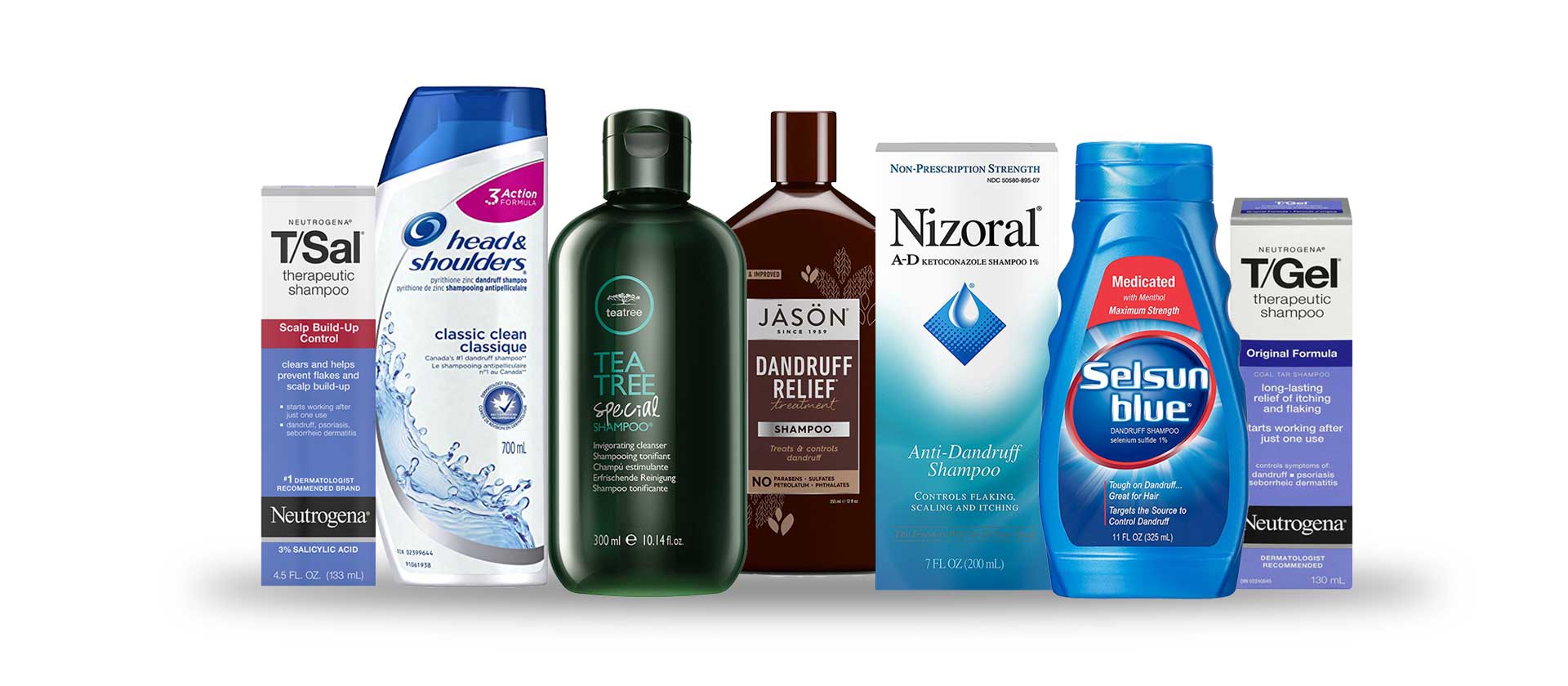
Dealing with seborrheic dermatitis and searching for a shampoo that actually works? You’re not alone. This article dives into 7 of the most popular seborrheic dermatitis shampoos, breaking down what makes them effective, key ingredients to look for, potential safety considerations, and real-world experiences.
We focus on shampoos with active ingredients approved by the FDA [you can review the FDA approved list of active ingredients][1] (with the exception of tea tree oil) to give you a solid foundation in your search for relief. While the science might get a bit detailed, understanding how these shampoos work is your best weapon against this persistent skin issue.
The First Step: Accurate Diagnosis
Before you start treatment, make sure you’re actually dealing with seborrheic dermatitis. Conditions like plaque psoriasis can look similar but require different approaches. Getting a professional diagnosis is crucial – visit a dermatologist to confirm seborrheic dermatitis and rule out other conditions. A correct diagnosis is the foundation for effective treatment.
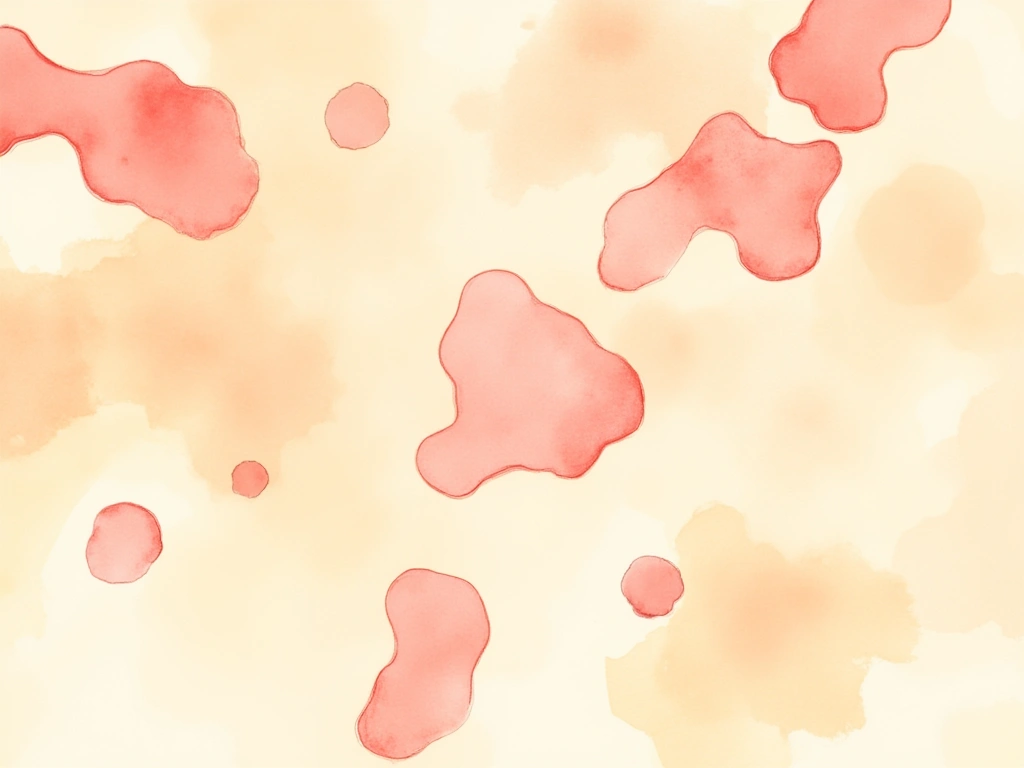
Understanding Seborrheic Dermatitis
Let’s quickly cover what seborrheic dermatitis is before we jump into shampoo reviews.
Seborrheic dermatitis is a chronic skin condition affecting roughly 5% of adults [1]. It’s considered a long-term condition that needs ongoing management to control symptoms.
On the scalp, seborrheic dermatitis is commonly known as dandruff. Dandruff is often seen as a milder form, but both involve dryness, flaky skin (which can be oily or dry), itching, and irritation. Dandruff is incredibly common, affecting up to 50% of the population [2].
Most research points to the Malassezia fungus as a key factor in seborrheic dermatitis [3, 4]. This fungus is naturally present on skin, but in some people, it triggers the inflammation and symptoms of seborrheic dermatitis.
Further Reading
Want to learn more about the condition itself? Check out our comprehensive Seborrheic Dermatitis Owner’s Manual for a deeper dive.
Now, let’s get to the shampoos that can help manage seborrheic dermatitis symptoms.
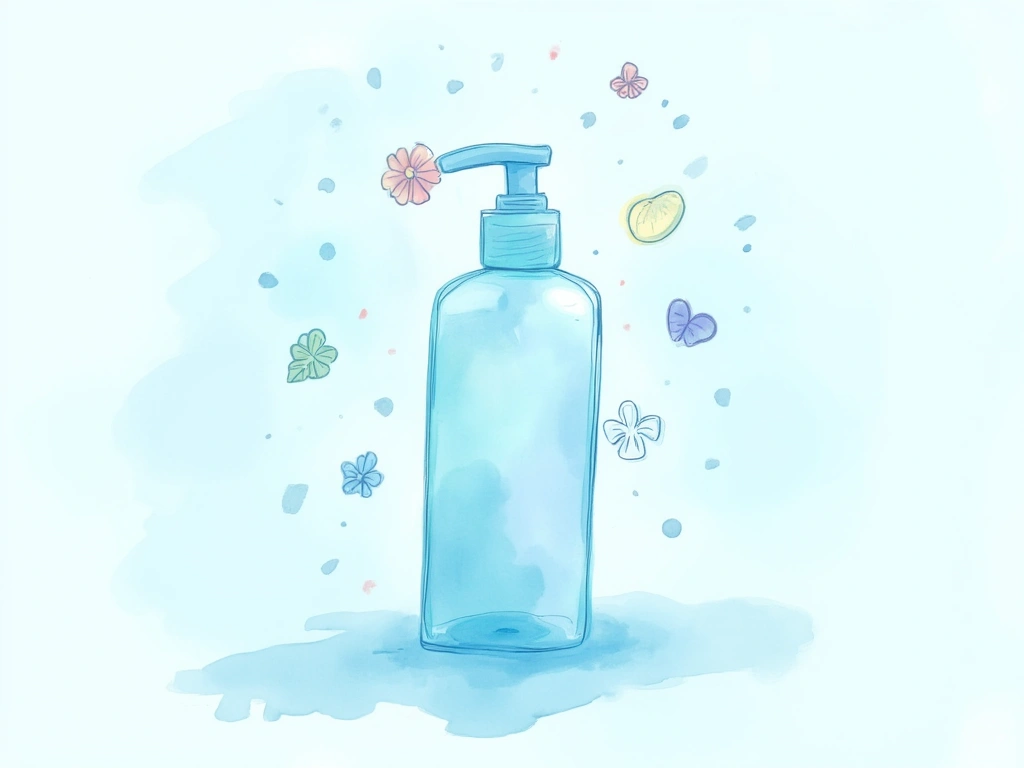
Top Seborrheic Dermatitis Shampoos: Reviews & Ingredients
1. Head and Shoulders Classic Clean – Pyrithione Zinc Shampoo
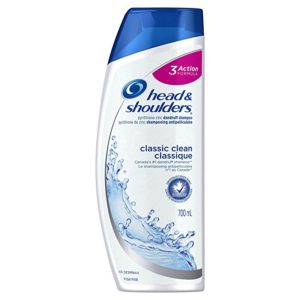
Active ingredient:
Pyrithione Zinc 1%
Ingredients:
Water, Sodium Lauryl Sulfate, Sodium Laureth Sulfate, Glycol Distearate, Zinc Carbonate, Sodium Chloride, Sodium Xylenesulfonate, Cocamidopropyl Betaine, Fragrance, Dimethicone, Sodium Benzoate, Guar Hydroxypropyltrimonium Chloride, Magnesium Carbonate Hydroxide, Methylchloroisothiazolinone, Methylisothiazolinone, Blue 1, Red 33.
Head and Shoulders is arguably the most popular dandruff shampoo globally, and for good reason. Its widespread use extends beyond those with diagnosed seborrheic dermatitis to anyone seeking a flake-free scalp. Effective marketing, accessible pricing, and proven results have made it a top-selling shampoo.
Procter & Gamble, Head and Shoulders’ parent company, has invested heavily in research on dandruff and seborrheic dermatitis. This research emphasizes Malassezia yeast as a primary cause of seborrheic dermatitis, leading to the development of pyrithione zinc as a key ingredient to combat it. Their goal is to create an antifungal that targets Malassezia while being gentle on skin cells.
Safety of Head and Shoulders
Extensive safety and toxicology studies, funded by Proctor & Gamble, support the safety of Head and Shoulders for general use. Its global availability in countries with stringent safety regulations further suggests a favorable safety profile.
However, it’s important to note that zinc pyrithione, the active ingredient, can be harmful at very high concentrations (20%+), potentially causing DNA damage [5]. This is a concern only at extreme concentrations, and is true for many skincare ingredients like urea and lactic acid at high percentages. At the 1% concentration in Head and Shoulders, it is considered safe for regular use.
Effectiveness of Head and Shoulders
Zinc pyrithione is a well-established and effective antifungal agent for seborrheic dermatitis [6, 7]. While stronger antifungals like ketoconazole or selenium sulfide might be needed for severe cases [8], zinc pyrithione offers a good balance of efficacy and minimal side effects.
Some users report potential side effects with long-term use, including skin lightening, increased sun sensitivity, and dryness.
Personal Experience
In personal experience, Head and Shoulders provides rapid relief. Itching often subsides almost immediately, and redness and irritation begin to decrease quickly.
Flakiness and dryness take longer to improve with consistent use. In fact, dryness was sometimes exacerbated for me, requiring extra moisturizer or conditioner.
Key Takeaways
- Highly effective for many with dandruff and seborrheic dermatitis.
- Contains FDA-approved pyrithione zinc.
- Safe at recommended concentrations.
- Potential long-term side effects like dryness and sun sensitivity reported by some.
2. Neutrogena T/Gel – Therapeutic Shampoo – Original Formula
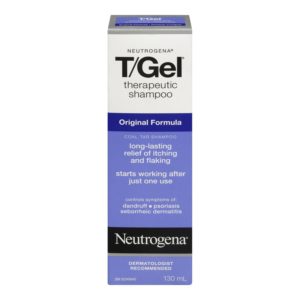
Active ingredient:
Coal Tar 1% (4% Neutar® Solubilized Coal Tar Extract)
Ingredients:
Water, Sodium Laureth Sulfate, Polysorbate 20, Cocamidopropyl Betaine, Bishydroxyethyl Dihydroxypropyl Stearammonium Chloride, Fragrance, Cocamide MEA, PEG-120 Methyl Glucose Dioleate, DMDM Hydantoin, Tetrasodium EDTA, Sodium Hydroxide, Citric Acid, Sodium Chloride, Triethanolamine
Neutrogena T/Gel features coal tar, an ingredient with a long history of treating skin conditions [9, 10]. It’s FDA-approved for dandruff, seborrheic dermatitis, and psoriasis. While other tars exist (pine tar, shale oil), coal tar is most common due to availability and cost-effectiveness.
Tar-based shampoos work by slowing skin cell overgrowth, reducing inflammation, and fighting bacteria and fungi [11, 12].
Explore Coal Tar Shampoo Alternatives
Looking for other coal tar options? DandruffDeconstructed, a website by community member Chris, offers a comprehensive list of coal tar shampoos.
Safety of Coal Tar Shampoos
Coal tar has a strong safety record due to decades of use [13], with some studies spanning several decades [14].
Natural tar alternatives have less extensive safety data but also have a long history of use with few reported issues. Emerging research suggests sulfonated oils might be even safer than coal tar [15].
While there are concerns about potential neurotoxicity and carcinogenicity of tars, no direct link to harm in humans has been established [16].
A known side effect of coal tar is photosensitivity [17], increasing skin’s sensitivity to UV light. Take precautions to minimize sun exposure after using coal tar shampoos.
Effectiveness of Coal Tar
The FDA recognizes coal tar (0.5% to 5% concentration) as effective for seborrheic dermatitis [1].
Its antifungal action against Malassezia is documented [], and lab studies suggest its effectiveness may be comparable to ketoconazole [18].
Beyond antifungal properties, coal tar can []:
- Reduce rapid skin cell growth in psoriasis
- Thicken healthy skin
- Reduce itching and inflammation
- Decrease sebum production
Personal Experience
Neutrogena T/Gel was a personal favorite among readily available shampoos. It has a simpler ingredient list than many Head and Shoulders formulas and was less drying. It was my second most used antifungal shampoo, after Head and Shoulders (which initially worked well for milder issues).
If starting seborrheic dermatitis treatment again, a coal tar shampoo would be a top contender for initial testing.
I’ve also used sulfonated shale oil shampoo successfully, but its higher cost, limited availability, and reports of formula changes [recent Amazon reviews suggest issues with the new formula][2] led to its exclusion from this main list.
Pine tar soaps, like Grandpa’s Pine Tar Soap, were also effective but more drying than Neutrogena T/Gel. The natural, campfire-like scent of pine tar was preferable to Neutrogena’s strong, somewhat artificial fragrance.
Why Coal Tar Shampoos Are Less Popular
The main downsides are the strong odor and potential to stain clothing.
The smell is noticeable but can become tolerable, even enjoyable (as with pine tar soap).
Staining is less of a problem than often perceived. While the brown shampoo can stain, thorough washing usually removes it from fabrics.
Key Takeaways
- Neutrogena T/Gel uses coal tar as its active ingredient.
- Coal tar is FDA-approved and effective for seborrheic dermatitis.
- Long-standing safety record.
- Original T/Gel formula is relatively simple and less drying than some alternatives.
- Tar shampoos are considered natural, but the strong odor can be a drawback.
3. Nizoral Anti-Dandruff Shampoo – Ketoconazole
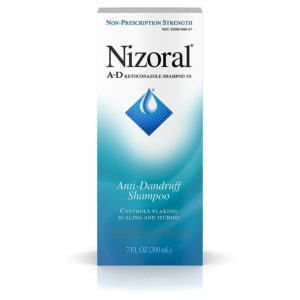
Active ingredient:
Ketoconazole (1%)
Ingredients:
Acrylic Acid Polymer, Butylated Hydroxytoluene, Cocamide MEA, FD&C Blue 1, Fragrance, Glycol Distearate, Polyquaternium 7, Quaternium 15, Sodium Chloride, Sodium Cocoyl Sarcosinate, Sodium Hydroxide, Hydrochloric Acid, Sodium Laureth Sulfate, Tetrasodium EDTA, Water (Aqua)
Nizoral’s active ingredient, ketoconazole, is considered one of the most potent over-the-counter antifungals developed in recent decades. It’s widely used medically for various fungal infections, both internal and external, including seborrheic dermatitis and dandruff.
Safety of Ketoconazole Shampoos
Nizoral/Ketoconazole is considered safe when used as directed (2-3 times per week) based on research [19].
Like most over-the-counter treatments, some adverse reactions are reported:
- Hair discoloration
- Hair texture changes
- Itching/burning
- Irritation and sensitivity
However, the concentration is crucial for safety. The data and available products are typically at a maximum of 2% concentration, minimizing risk.
Effectiveness of Ketoconazole for Seborrheic Dermatitis
Ketoconazole is recognized as a highly effective over-the-counter antifungal for seborrheic dermatitis []. Some studies even suggest it’s nearly as effective as hydrocortisone treatments [20].
For those with hair loss, ketoconazole may offer additional benefits. Studies indicate it can improve hair growth, increasing hair shaft thickness and density []. Some Amazon reviews even mention using it for early hair loss prevention.
Personal Experience
Nizoral felt like the strongest antifungal shampoo tested. It felt like it stripped everything from the scalp and hair, leaving it feeling very clean, almost raw. As a shampoo, it made hair feel dry and straw-like.
While it effectively eliminated redness, itching, flakiness, and other seborrheic dermatitis symptoms, its strength limited usage to only a few times.
Key Takeaways
- Nizoral (ketoconazole) is highly effective for seborrheic dermatitis.
- Considered safe when used as directed.
- One of the strongest OTC antifungals.
- May help with hair loss and balding.
- Can be drying for some users.
4. Selsun Blue Medicated Dandruff Shampoo – Selenium Sulfide
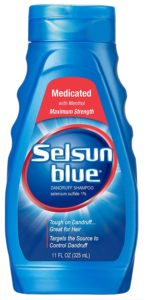
Active ingredient:
Selenium Sulfide 1% Ingredients:
Water, Ammonium Lauryl Sulfate, Distearyl Phthalic Acid Amide, Ammonium Laureth Sulfate, Sodium Chloride, Cocamide MEA, Dimethicone, Aloe Barbadensis Leaf Juice, Hydroxypropyl Methylcellulose, Sodium Isostearoyl Lactylate, DMDM Hydantoin, Fragrance, Citric Acid, Sodium Citrate, Titanium Dioxide, Blue 1
Selsun Blue was the first commercially successful selenium sulfide shampoo in North America.
Selenium sulfide, related to sulfur, was developed in the 1950s to improve upon sulfur’s odor and enhance its therapeutic effects. The result is a potent antifungal that is also relatively gentle on the skin.
Safety of Selenium Sulfide Shampoos
Selenium sulfide shampoos are generally considered safe with regular use []. However, they may have a slightly higher chance of side effects compared to other options [21].
Selenium sulfide is banned in Japan and some European countries. It is also classified as a carcinogen by the EPA [3] and the State of California [4] (California’s Proposition 65 list is extensive).
Despite these concerns, the FDA continues to allow its sale in North America and includes it on the approved list of active ingredients for seborrheic dermatitis treatment, based on available safety data.
Effectiveness of Selenium Sulfide
User experiences online suggest Selsun Blue is highly effective for seborrheic dermatitis. Clinical studies show it to be as effective as ketoconazole shampoos [], and potentially more effective than pyrithione zinc (Head and Shoulders) and coal tar (T/Gel).
It may also be less likely to increase sun sensitivity compared to other treatments.
Personal Experience
Selsun Blue’s blue color and thick texture make it visually distinct. Many users praise its effectiveness, and some YouTube reviews highlight its success when other antifungals have failed.
Personally, I haven’t used Selsun Blue. By the time I learned about it, I was largely finished with antifungal treatments. Safety concerns were also a factor in my decision not to try it.
Key Takeaways
- Selsun Blue is a leading selenium sulfide shampoo in North America.
- Selenium sulfide is very effective for seborrheic dermatitis symptoms.
- Some safety concerns exist regarding long-term use [22].
- Many users report success with Selsun Blue when other treatments failed.
5. Neutrogena T/Sal – Therapeutic Shampoo – Scalp Build-Up Control
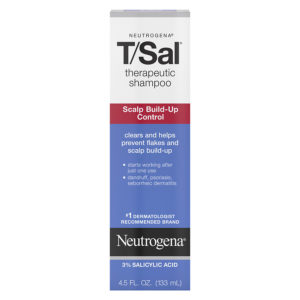
Active ingredient:
Salicylic Acid 3%
Ingredients:
Water, Cocamidopropyl Betaine, Sodium C14-16 Olefin Sulfonate, Linoleamidopropyl PG-Dimonium Chloride Phosphate, Sodium Lauroyl Sarcosinate, Polyquaternium-22, Hexylene Glycol, Sodium Citrate
Neutrogena T/Sal offers a different approach, focusing on salicylic acid rather than a primary antifungal agent. While salicylic acid may have some antifungal properties, it’s primarily known for its skin-exfoliating action.
T/Sal works by removing dead skin cells and yeast buildup through its acidic action.
Salicylic acid is a natural acid derived from willow bark. It’s commonly used for acne and, at higher concentrations, for removing warts and corns [23].
For seborrheic dermatitis (dandruff), it effectively removes flakes [], leaving the scalp feeling clean and bare.
Safety of Salicylic Acid Shampoos
Salicylic acid is considered one of the safer ingredients in this review. Its widespread use has resulted in extensive safety data [24].
Some people with highly sensitive skin may experience mild discomfort due to its acidity, but significant side effects are rare.
Effectiveness of Salicylic Acid
Salicylic acid shampoos work best for mild seborrheic dermatitis. For more severe cases, they may be less effective. This is likely because Malassezia yeast can penetrate deeper skin layers, and salicylic acid’s antifungal properties are relatively weak [25].
Combining salicylic acid with a stronger antifungal, like sulfur, can create a more effective “one-two punch” for seborrheic dermatitis, proving more beneficial than either ingredient alone [26].
Personal Experience
T/Sal provided immediate but not long-lasting relief in personal experience. Initial washes improved symptoms quickly, but the skin seemed to adapt, and symptoms returned relatively fast.
A key positive was its mildness.
Key Takeaways
- Neutrogena T/Sal (salicylic acid) is effective for mild seborrheic dermatitis.
- Primarily works by exfoliating flakes and scales.
- May be insufficient for more severe cases.
- Generally very mild and well-tolerated.
6. Jason Dandruff Relief Treatment Shampoo – Sulfur & Salicylic Acid
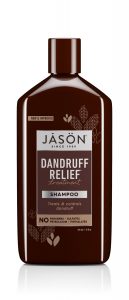
Active ingredients:
Sulfur 2.0%, Salicylic Acid 2.0%
Ingredients:
Aqua (water), sodium cocoyl isethionate, disodium cocoamphodiacetate, stearic acid, potassium cocoyl glutamate, glycerin, sodium lauroyl sarcosinate, cetyl alcohol, cocamidopropyl betaine, hydrolyzed wheat protein, olea europaea (olive) fruit oil(1), pogostemon cablin (patchouli) oil, rosmarinus officinalis (rosemary) leaf oil, simmondsia chinensis (jojoba) seed oil(1), camphor, dimethyl sulfone(2), menthol, methyl salicylate, potassium hydroxide, sodium PCA, xanthan gum, benzyl alcohol, capryloyl glycine, undecylenoyl glycine, amyl cinnamal, benzyl benzoate, hexyl cinnamal, hydroxycitronellal, linalool, limonene, fragrance (parfum)
Note Different Formulations
Be aware of the specific ingredient list shown here. Jason brand offers other “Dandruff Relief” shampoos with different base formulas.
Jason Dandruff Relief shampoo combines sulfur and salicylic acid, building on the concept of a dual-action approach. While the sulfur scent can be strong, the combination of sulfur and salicylic acid is effective.
Salicylic acid removes buildup and scales, while sulfur targets the Malassezia fungus.
As mentioned with T/Sal, salicylic acid and sulfur together are documented as highly effective for seborrheic dermatitis [27]. Although sulfur’s popularity has decreased somewhat due to its odor, it remains an FDA-approved treatment for seborrheic dermatitis [1].
Safety of Sulfur Shampoos
Both salicylic acid and sulfur are natural ingredients with centuries of use and strong safety records. They are among the safest options reviewed, while still being effective.
The main safety consideration is sulfur’s strong odor, which can be socially limiting. It’s best to avoid using sulfur shampoo immediately before social engagements.
Effectiveness of Sulfur Shampoos
Jason Dandruff Relief receives widespread positive feedback online. Negative reviews often stem from inconsistent use or dislike of the sulfur smell.
It’s important to note that multiple Jason “Dandruff Relief” formulations exist. The formula with “sodium cocoyl isethionate” as a primary cleansing agent is generally the most praised.
Personal Experience
Personal results were comparable to Head and Shoulders, with potentially longer-lasting effects. It might take slightly longer to see initial improvement, but maintenance becomes easier once symptoms are controlled.
Key Takeaways
- Jason Dandruff Relief combines salicylic acid and sulfur.
- This combination is effective even for moderate to severe cases.
- Consistent use optimizes sulfur’s effectiveness.
- Strong sulfur odor can be a deterrent for some.
7. Paul Mitchell Tea Tree Special Shampoo – Tea Tree Oil
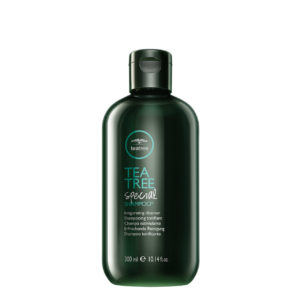
Active ingredient:
Melaleuca Alternifolia (Tea Tree) Leaf Oil
Ingredients:
Aqua (Water, Eau), Sodium Laureth Sulfate, Sodium Lauryl Sulfate, Cocamide MIPA, Parfum (Fragrance), Cocamidopropyl Betaine, Panthenol, Menthol, Hedychium Coronarium (White Ginger) Flower/Leaf/Stem Extract, Triticum Vulgare (Wheat) Germ Oil, Algae Extract, Simmondsia Chinensis (Jojoba) Leaf Extract, Aloe Barbadensis Leaf Extract, Anthemis Nobilis Flower Extract, Rosmarinus Officinalis (Rosemary) Leaf Extract, Glycerin, Oleamidopropyl Betaine, Propylene Glycol, Glycol Stearate, PEG-150 Distearate, Citric Acid, Tetrasodium EDTA, Polyquaternium-7, Bisamino PEG/PPG-41/3 Aminoethyl PG-Propyl Dimethicone, PEG-12 Dimethicone, Methylchloroisothiazolinone, Methylisothiazolinone, Magnesium Chloride, Magnesium Nitrate, Limonene, Linalool, Citronellol, CI 42090 (Blue 1), CI 19140 (Yellow 5).
Tea tree oil shampoos, appealing for their natural image, are popular in North America. Paul Mitchell’s Tea Tree Special Shampoo is well-regarded, particularly in hair salons.
Safety of Tea Tree Oil Shampoos
Tea tree oil as an active ingredient has a long history of use [], supporting its established safety profile at recommended concentrations.
While marketed as “natural,” Paul Mitchell’s formula does contain ingredients some consider less desirable in natural products (like SLS). More “natural” tea tree shampoos are available from other brands.
Effectiveness of Tea Tree Oil
Tea tree oil is not FDA-approved for seborrheic dermatitis, but it’s a popular natural alternative with research supporting its efficacy.
Studies on tea tree oil shampoos for seborrheic dermatitis show promise:
- Lab studies show tea tree oil inhibits Malassezia growth, suggesting it could be “useful in the treatment of conditions involving M. furfur” [28].
- A study with 126 participants showed a 41% improvement in dandruff with 5% tea tree oil shampoo. Scaliness showed the least improvement, but the study concluded 5% tea tree oil is “effective and well tolerated” for dandruff [29].
Personal Experience
The effectiveness of Paul Mitchell Tea Tree Special Shampoo was unclear in personal experience. While some users report success, no noticeable improvement in seborrheic dermatitis symptoms was observed after regular use.
On the positive side, the shampoo has a pleasant scent and a premium feel.
Key Takeaways
- Tea tree oil is a popular natural alternative.
- May benefit mild to moderate cases, but effectiveness for severe cases is less certain.
- Paul Mitchell’s formula, while popular in salons, may not be the most “natural” tea tree oil shampoo option.

Summary and Key Conclusions
Here are the main takeaways to guide your seborrheic dermatitis shampoo choices:
- Chronic Condition: Seborrheic dermatitis is typically chronic, requiring ongoing management to control symptoms.
- Diagnosis First: Accurate diagnosis is essential. Consult a doctor to confirm seborrheic dermatitis and rule out other conditions.
- Malassezia Focus: Malassezia yeast is believed to be a primary cause, making antifungal treatments the most common approach.
- Pyrithione Zinc (Head & Shoulders): The most widely used antifungal, with Head & Shoulders being the most popular brand globally.
- Coal Tar (Neutrogena T/Gel): Long-established, safe, and effective, but odor and variable results can be drawbacks.
- Ketoconazole & Selenium Sulfide (Nizoral, Selsun Blue): Potent antifungals, potentially best for more severe cases.
- Salicylic Acid & Tea Tree Oil (Neutrogena T/Sal, Paul Mitchell Tea Tree): Milder, natural options that may be suitable for less severe cases or as part of a gentler approach.
- Sulfur (Jason Dandruff Relief): FDA-approved and effective, but less commonly discussed and has a noticeable odor.
- Ecosystem Approach: Future treatments may shift towards balancing the skin’s overall ecosystem, rather than solely targeting Malassezia.
Many effective shampoos are available for seborrheic dermatitis. However, individual responses vary, and seborrheic dermatitis remains a complex condition that isn’t fully understood.
Ultimately, understanding seborrheic dermatitis is key to effectively managing it. Informed choices are empowered choices.
Think about it:
Consider the ongoing benefit to companies from chronic conditions. What other strategies are you using, beyond shampoos, to manage your seborrheic dermatitis?
Share your experiences! If you’ve used any of these shampoos or others for seborrheic dermatitis, please leave your feedback in the comments below to help others.

I am a bit confused. You state at the end how none of these shampoos helped you but you dont mention that till the end. And you also dont mention what helped you during the two month period when you just stayed at home. Was it the honey treatment?
Reply PermalinkHi John,
Sorry for the confusion. The shampoos did help greatly in controlling my seborrheic dermatitis, but my skin seemed to become overly dependent on it. Additional most of them made my skin overly sensitive (particularly to UV rays). Neutrogena Coal tar was probably my favourite as it seemed to be a little more gentle.
The two month period was when I abruptly stopped using all anti dandruff shampoos and solutions. For about a month I tried not doing anything at all, but found skin quite oily after exercise. Then I started my own regimen and its been quite effective ever since.
The honey was very good as well. But, its quite a time consuming treatment though. Also it lost some effectiveness over time, but this was probably due to my laziness and lack of consistency.
Hope that helps. Best of luck.
Reply PermalinkIn my opinion the Holy Grail of medicall shampoos for very bad breakouts is: Kertyol by Ducray, this was prescribed by a dermatologist when I had an extremely horrible breakout of SD (my head was full of wounds and dry flakes, and my hair was falling in patches from the worst affected areas).
I used this one http://aptekaslonik.pl/images/prod/6154/ducray-kertyol-szampon-125.jpg
It worked like magic, so from a head full of scales and wounds, to an extremely happy clear skin that felt great, my hair had a nice herbal smell and the overall feeling was amazing. After few weeks the skin normalized so I was able to switch back to a normal Zink Pirithione shampoo for maintenance (head and shoulders or Syoss).
I would have liked to continue with Kertyol but it was too expensive for me for long term use.
Warning: There are many types of Ducray products for different types of SD or for Psoriazis, so it is good if a doctor is familiar with it and will prescribe it according to your condition. Or do your research first http://www.ducray.com/en-gb/hair-care
Selenium Sulfide Shampoos are also effective for me, but it took a long time to become effective_ 2-3 weeks until clearing up 100% of the dandruff.
Zink pirithione shampoos as Syoss or Head and Shoulders are effective from first uses but only for long term maintenance, not for treating a breakout. If you have a horrible breakout, these might not cut it, you might need a strong medical one like Kertyol for a while.
Nizoral is one of the worst ones, don’t try it, waste of money. It clears the skin but the skin does not feel good afterwards, Also it is only working for a very short amount of time, and then the problem is back in full force. My doctor said that he would not recommend it because it looses effectiveness very quickly and patients usually don’t like it.
Reply PermalinkFantastic write up. I have red sores on my scalp for the last few years and switched from head and shoulders when I learned about the nasty ingredients used. I tried Jasons shampoo which definitely helped a little but then I found Reviive Organics, not sure if you have heard of them but my sores on my scalp have completely gone. I no longer need to wash my hair every single day and would recommend for you to do a writeup on this also ! www.reviive.com/en
Reply PermalinkHi GC,
Thanks for the update. Look’s interesting, but it seems like it has very limited availability. Have been actually quite interested in the active ingredient in this (which appears to be a combination of ichthyol and crotamiton.
Itchyol has quite a good track record and is similar to coal tar, but a more natural version. It is also known as sulfonated shale oil. Unfortunately it’s availability in the North American market is fairly limited and I believe this is due to some issues with FDA approval. However, I strongly believe that this is a much better and safer alternative to coal tar (based on all the research that I’ve seen). Personally, I think it’s simply not being allowed on to the market due to competitor interests. Regardless, I was able to get pure itchyol from a personal friend in Russia. It worked very well at getting rid of the seborrheic dermatitis, but I wasn’t quite able to find a way to integrate it into a easy to follow routine (it’s basically a tar -> stick, black, and smells like resin).
The one shampoo I did find that contained itchyol was this one:
Morrocco Method Pine Shale Shampoo
Worked well for me. However, it was really expensive and went bad before I could finish the bottle.
Completely agree regarding the other points. Except, personally I never attempted any selenium sulfide products, at this time I had already found that natural products can be just as effective.
Thanks again for the detailed comment and adding on to the discussion.
Reply PermalinkAll the best.
Hi Jack,
Thanks for the feedback and your input. Took a quick look at the Reviive products and they seem fairly good. But I believe they are priced way to high. There are many other natural/organic products on the market with very similar ingredients that are much cheaper. The ingredients used for both their shampoo and conditioner are fairly standard among the natural product offerings from other companies.
All the best.
Reply PermalinkHi, I have just recently found out that I have seb derm, never knew until then. But only on my scalp, but problem now is hairloss. I used to have tons of hair but now they become thinner and thinner , and I think it’s due to seb derm . Now I use selsun once a week and Head&shoulder Classic Clean daily, to keep my hair away from flakes. I just wonder, do you and the others, who also have seb derm, have the same issue like me ?
Reply PermalinkBest regards!!
Jack, I am interested in your complaint of noticing red sores on your scalp after using Head and Shoulders. While, out of all if the med shampoos I have used, the zinc pirythione seems to be the one med that actually impacts my seb term (temporarily) , I too often notice sores on my scalp…i figured it may be due to the heavy sudsing ingredients…are you aware of a particular ingredient in H and S that causes these sores? I am looking into other ways to use zinc pyrithicone on my scalp besides H and S
Reply PermalinkAfter first use of Nizoral, the seborrhea has increase and itching has increased 2 times it was before.
Is this normal. Should I continue using it.
Reply PermalinkHi , I am pretty sure it did not contain Itchyol, that ingredient is only in their shampoos for Psoriazis.
The shampoo that I used in the past is now called Squanorm, but I am not sure if they changed the recipe. http://www.ducray.com/en-gb/node/66917
Now I am using a new one called Kelual DS for Seborrheic Dermatitis which is quite expensive but really effective.
I also started to use the Kelual DS cream (http://www.ducray.com/en-gb/node/66915) for face and ears combined with Biom8.
Reply PermalinkThe combination is really good: Kelual DS cream stops the flaking but sometimes the itchiness comes back, and Biom8 reduces the itchiness and increases the effectiveness of the treatment. I am not cured completely but my skin looks and feels quite normal when I apply this combination.
Hi Tuan,
In the majority of the research I’ve came across, hair loss typically accompanies seborrheic dermatitis. This is because the malassezia fungus likes to invade the hair follicules and this can get in the way of healthy hair growth. The second edition of Seborrheic Dermatitis - The Owners ManualeBook will contain a section devoted to explained the hair loss associated with SD and potential ways to resolve the issue.
Overall though, once the seborrheic dermatitis is controlled, hair loss usually returns to normal. Both Ketoconazole (Nizoral) and Pyrithione Zinc (Head and Shoulders) have been shown to help improve hair growth in a significant number of studies. Some individuals who have issues solely with hair loss even use Ketoconazole.
Hope that helps.
Reply PermalinkAll the best!
Hi Vic,
This isn’t normal and it seems your skin isn’t agreeing with it.
Personally, I would stop usage and attempt something else.
Let me know if you have any updates.
Reply PermalinkBest of luck!
Hi GC,
Thanks for the response. Will look into these in more detail and potentially add them into the main post as well.
How exactly have you been combining the two? Would be interesting to hear. Potentially, a good idea would be for me to add a section to the Biom8 website for users to provide details on their own unique approaches to using it (get some pretty creative ideas through email). Also, have you attempted solely Biom8 usage?
Thanks again and best of luck!
Reply PermalinkHope things continue indefinitely.
Thanks michel for this review its realy helped , im newly diagnosed with SD and i use triderma shampoo containing salicylic acid its just work for one day doesnt help so much , i just wonder about the safest product in pre pregnancy and during preg and breast feeding???
Reply PermalinkHI SMS,
Thanks for the positive feedback. And sorry to hear about your results with that shampoo.
A more natural approach is likely best in this situation. My current regimen (My Seborrheic Dermatitis Skin Regimen 2.0) uses all natural fatty acids to control my facial seborrheic dermatitis and some people use it with great results on their scalp as well.
Personally, simply using this shampoo: Andalou Naturals Moisture Rich Shampoo, seemed to clear by scalp issues.
A medicated shampoo you may want to consider is this: Kertyol P.S.O.
It uses a supposedly more natural alternative to coal tar and is considered to have a better safety profile (and is much more popular in Europe).
Hope that helps and look forward to any updates.
Reply PermalinkI used Neutregena T-gel every time I washed my hair for a number of years and suspect that it caused ongoing hairloss for me. I stopped using it and with each passing month my hair grew back to its normal fullness.
Reply PermalinkHi everyone. My scalp is literally a snow storm and itchy with dried lumps of skin, that come away when picked. Sometime these very itchy bits then break and become sore. I’ve tried so many shampoos from my GP over the last year and nothing has cleared it. I’ve turned to pure organic products,containing burdock and Neem, for irritated scalps…no improvement. I’ve soaked my head in cider vinegar, which took the redness away from my hair line, and rubbed tea tree oil in. Nothing has touched the snow storm . I’ve noted various other shampoos that have been mentioned, and if I can purchase them , I’ll try them. Coal tar made my scalp go mental!! I’m into natural products where possible, but my scalp is now just getting me down. Nice page here though exchanging ideas. Thank you.
Reply Permalinkhead and shoulders does NOT WORK AT ALL, actually makes the problem worse
Reply Permalinkthis must be seriously sponsored
I recently knew that I have Seborrhic Dramatics on my scalp. I was using “f-biwash+” shampoo(http://www.fluencepharma.in/wp-content/uploads/2016/02/Combined-BrochureQ.png) with Apple Cider Vinegar for about a year.
Apple Cider Vinegar may have reduced my red spot but I found that my scalp is not improving. There is still lots dandruff in the roots of my hair, which cause lot hair fall.
I also used Head and Shoulders Anti-hair fall shampoo (Zink Pirithione Shampoo) for about a week. But that does not seem to work well. After using this shampoo, there is always a soft white layer of wet dandruff on my whole scalp. If I try to remove them ,then there is lots of hair fall.
Which of these Shampoos will be best for me?
Should I use http://aptekaslonik.pl/images/prod/6154/ducray-kertyol-szampon-125.jpg??
I don’t want to use “f-biwash” anymore. It is totally waste of money !!
Reply PermalinkThank you so much for writing this! I thought I was going to go crazy trying to figure out what kind of shampoo to use to get rid of this mess on my scalp, but I found your review and it definitely saved me a huge headache! It also makes me feel better knowing that I am not the only one who has to deal with seborrheic dermatitis. It’s made me feel so insecure lately, but thanks to your review, I feel less alone, less embarrassed, and know what to look for when I go to the store!
Reply PermalinkShortly after we were married, my husband developed an awful case of seborrheic dermatitis, and even the prescription shampoos did little to abate the mess. His scalp was oily, smelly and the flakes came off in huge greasy patches. I remembered having something similar as a child and my grandmother using apple cider vinegar directly on my scalp and thoroughly coming off as much of the scaling as she could. She then took a bar of coal tar soap, scrubbed my scalp and hair and then took a huge glop of mayonnaise, worked it into my hair and covered it with a hot towel. After about 30 minutes, she rinsed out all the mayonnaise and let my hair air dry. She did this three times in total over the span of a month and I had no more flakes, no more itching ever again.
I did this regimen to my husband and it kept the whole mess away for over 7 years. Then, he developed chronic asthma from a moldy duplex we were living in and I had to go thru the whole procedure again.
Unfortunately, when he has to take certain asthma meds, the gnasty mess comes back - but so far using organic apple cider vinegar, coal tar shampoo and a good hot oil treatment afterwards seems to do the trick. I honestly believe that the apple cider vinegar is the keystone to controlling the fungus. You might smell like a salad for a bit, but it’s worth it not to have the greasy flakes gracing your wardrobe!
Reply PermalinkHey so I’m 13 I’ve been struggling with SD for two years now,
Reply PermalinkI had it as a child and it went away for a while and it’s not back I’m assuming due to
Puberty. I’ve been using sebcur t for the past few months as it has been prescribed by my dermatologist and it seems to have really worked but it’s only perscribed to be used 2-3 times a week and then gradually use it less and less. I’m unaware of what to use in between cause I’m only using that shampoo 2-3 time per week and soaking my head in Dead Sea salt to dry the scalp. I need a gentle refractive shampoo to use in between do u know of any??
I have this condition on my scalp only (thank God!). I used Selsum Blue twice a week as instructed and it did wonders for me. My sensitivity also went away after a few uses and as long as I used it like that, I had no problems. Over the past six months or so, I stopped it because…I foolishly thought it was fine. But holy crow, my dandruff, the itching, and sensitivity are back with a vengeance! I also used Head & Shoulders for a while and I liked it too but it wasn’t as strong as Selsum Blue. Though I still use both for face wash once a week and my skin is super clear. I have a very sensitive body in terms of maintenance so to find two products that cheap that both work for me was a treasure. Now my Selsum is not working as well but I haven’t used it a while, which means the expiration date has passed. So both H&S and SB worked very well and I never noticed any long term effects from them; however, I now pay attention to the dates because they do actually matter. I use Clear conditioner and that helps soothe any of the itching. Great post! Very insightful.
Reply PermalinkI wanted to comment on Selsun Blue. During college I broke out in sweat related Tinea (a fungus) on my sides and back. After research online and going through expensive prescription creams, I tried the Selsun Blue. Due to the color, I used to call it “Smurfing Myself”. I would put a thin layer over the effected area and sit shirtless for about 30 minutes, then wash it off in the shower. In about a week my Tinea was gone.
Post college I decided to grow a beard and discovered I have dermatitis. Once again, I did some research, and found out that smurfing my face this time might be the answer. Sure enough, it works very well. I had to shave my beard to keep it at bay, but the Selsun Blue works wonders and I swear by it. I use the Selsun Blue on my face at night, shave in the morning after my shower, moisturize, and I’m good to go.
I hope this helps!
Reply PermalinkI have been living with SD for quite a long time. It first started showing up when I was 12 years old ( 19 years before), my pillow used to be full of flakes, where ever I sit and touch my hair always leaves traces, itching and irritation …God!!! very bad experience. I tried anything which family and friends were recomdending applied egg yolk, ginger, aleo vera, lemon, orange peel, lot of types of grasses, a lot types of shampoos with anti dundruff written on them, you name it… But one day in 2004 a friend of mine brough for me a shampoo named CLEAR. I can’t forget that day. It worked wonders for me. I washed with it the first time, it was itching to the extreme. The next wash itching was moderate and the skin irritation subsided. Third, fourth and so on. No irritation no dundraff at all. But that time the brand was new and their product was so effective in short time but this time its is a bit weaker I donno why( or may be I got used to it i cant figure out). That time i used to put a small amount on my hand and wash with it and faom it on my scalp and face wait like 3 mins and rinse. This time I have to put as it is thick on my face and and with little water on my scalp for 3 to 5 mins to be effective. 13 years I am using it as my regular hair shampoo and have never had any issues with it. It even made my hair more softer and better looking. I came up to this site to look for a long time and permanent solution for dundruff on my way I am also sharing my experience. Thanks
Reply PermalinkHey, I’ve been experiencing SD for like 6-7 years. I just knew that I’ve been diagnosed with SD for like 6 months ago when i went to see a dermatologist. From the beginning i thought it was only a normal dandruff but then after a year and another year passes by it became worst. I got a very flaky, itchiness, redness around my scalp. Trust me I’ve been using a lot of anti-dandruff shampoos but nothing worked. I even used selsun blue but the effect wasn’t really good. When i did a research, I thought it was psoriasis or eczema but when i went to dermatologist he told my diagnosis was SD. So far he prescribed me with Pinetar shampoo, u-closone cream ( i have it on my face as well but just a mild) and cetrizine to reduce the itchiness. For the 3 months I’ve been using that products and i have to say it works but the problem is that it goes on and off i mean i only got this SD when some factors trigger me like stress, climate changes. I felt very frustrated because i want it to be resolve. Right now the only method i have to do is get rid of the trigger factors. Is there any suggestions that i could try other methods?I really hope it helps me very much.
Reply PermalinkI have the same problem the white layer that looks like dead skin and if a rubbed it my hair comes off so easily and my hair is falling a lot for more that a year. Have you doing now ? Are you getting better ?
Reply PermalinkReading your story it sounds like mine exactly the same , have you found anything that has help you with the hair loss ? I will be so happy to hear from you .
Reply PermalinkHello,
Reply PermalinkYour article is very well written.I want to know the frequency of using the ‘Andalou…’ shampoo? do i have to use it daily?
So I’ve had this for a year now but it gets worst in the snowy winter months especially. I used up almost an entire bottle of Head and Shoulders but it literally did nothing for me. We then bought Nizorial and I thought it worked slightly but then I just realized it was super strong and intense because I scratch my hair every hour so I have irritated skin everywhere on my scalp. Now my husband helps me put tea tree oil on my scalp (it’s on my lower half which is weird), but I don’t think we’re making huge progress. It’s hard because I have curly hair and I’m not supposed to wash it every day because it’s bad for it. Do you suggest I just deal with it and wash it every day? Is that my problem? I have it in my ears too and I just can’t stop itching everywhere. I don’t know what to do.
Reply PermalinkI shall be trying Argan Oil shampoo and conditioner as nothing else, including Cortisone creams and cortisoneshampoo has helped.
Reply PermalinkI appreciate this write up. I was diagnosed with SD about 10 years ago. I had a huge white flaky patch in the back of my head that inched incessantly. I went to the dermatologist and they diagnosed it. I was prescribed Loprox shampoo and Olux foam which worked wonders but is too expensive. I’ve used Neutrogena T-Sal for years when it flares upeople but I have a very mild case that doesn’t require constant treatment. Today I purchasedon’t Dermarest shampoo as my scalp has been a little itchy lately. Hoping it works as well as Neutrogena but at a more reasonable price.
Also, I’ve noticed my hair doesn’t grow as well on the side and or in the area of my head that gets the flare up. It has grown but it’s much slower and not as full.
Reply PermalinkI lost all my hair a few years back due to the worst case of SB. The only thing that grew my hair back (After extensive treatment of the SB which took about 2 months) was JAMAICAN BLACK CASTOR OIL. Cheap and saved my hairline!
Reply PermalinkI have serborrheic dermatitis… Having been using alot of African medicines but not going off… Some of the medicines you listed are not on Ghana markets
Reply PermalinkMy dermatologist advised me Betnovate Lotion to apply on my scalp and it amazingly works within 24 to 48 hours. Also Advanton creame for skin. I never used shampoo for SD treatment.
Reply PermalinkI have had Dermitits for about two years. I have seen 3 M Ds& two allergy Dr. Never been told to use anything but a cortzone cream. It doesn’t work. The itchy rash has move down my neck and started down upper part of my arm. I use Prednsone for relief. I worry this is going to destroy my bones. I just ordered BIMO8 . I only found out about this last week. THANK YOU JOHN GRIFFIN
Reply PermalinkAre you still using the Andalou organics shampoo? Recent reviews on Amazon say that the formulation has changed and it now contains more irritating ingredients. I am looking for a super sensitive zinc based shampoo. I have sebopsoriasis that reacts with almost everything that touches it. The only shampoos I can use currently are kerytol pso and body shop ginger scalp remedy. These shampoos don’t prevent the scalp condition from happening, just keep it at Bay. Still having scale buildup, pain and hair loss (breaking at root). Would love to not wash my hair but it gets greasy within one day and if I don’t wash, the build up/hair loss gets out of control.
Reply PermalinkThe safety of these shampoos is a huge issue. The chemicals present, when applied to our skin, may be toxic or carcinogenic. Just because a company makes a product doesn’t mean that it is safe. Regarding the coal tar shampoo T-Gel, I can’t believe that the author would state thus: “Neutrogena and other manufacturers have likely done their duty and conducted a fair amount of safety research (at-least I would hope they have).” Right. Companies with a vested interest in selling us their product would never obfuscate or mislead the public, perform the minimal amount of research required to get a product on the shelf, or downright lie as to the safety of their product.
My point: The descriptions in this list are nothing but one person’s personal experiences with a small dash of research. Use the advice herein with a grain of salt and be wary of the sections describing the safety of these chemical products.
Reply Permalinkhi,
how do u use the lotion? do you put it on before a hair wash or after? whats the process?
Reply PermalinkThr first 5 shampoos listed will turn one’s head of hair into a nasty, dried out, broken off mess. All of the ingredients in them are poison for the health of your hair. I have been through most of them and suffered the disastrous results. Please do more research, there are many organic shampoos and scalp treatments which will successfully treat your SD and leave you with your beautiful head of hair.
Reply PermalinkFrom the perspective of Traditional Chinese Medicine (TCM), the problem is not usually well treated from the exterior of the body. According to Chinese medicine, diet plays an important role in controlling seborrheic dermatitis. Foods that produce dampness and heat, such as spicy and greasy foods, sweets, and meats such as lamb, chicken, capon, duck, and shrimp, should be avoided during the course of treatment. Caffeinated beverages and alcohol should also be discontinued or limited. I know this is the hardest part, but will bring the greatest relief.
Reply PermalinkIf you have the opportunity to see a traditional Chinese medicine doctor, or acupuncturist, you may find help from a direction you did not expect. I hope this helps! We’re all in this together!
Hi Emily,
Reply PermalinkHave tried tea tree oil too…just made it worse actually and saw more flakes than ever…they say tea tree oil can cause skin / scalp reactions…
The kerytol psi site doesn’t work right. It cuts off parts of sentences and switches to other products when you’re trying to read. Too messed up to bother with.
Reply PermalinkI will buy head & shoulders today. What helped for your facial skin? I have the red spots by my nostrils, middle of my forehead and chin. I hate it. Thx for all your info!
Reply PermalinkCan you clarify please: was coal tar shampoo or bar of coal tar soap what you used?
Reply PermalinkI’ve used just about all the shampoos, prescription and over the counter, mentioned in the article over the years, with mixed results. I finally read some testimonials about Selsun Blue shampoo, extolling the great results. I though this was hard to believe, as this shampoo has been around for many years, and I never heard that it was so effective for Seborrheic Dermatitis. I purchased a bottle and began to use it, with incredible results!!! My face has cleared up, as well as my scalp. I use it every three or four days to maintain the effect. I wish I had known about this treatment many years ago. I’m now 78 years old.
Reply PermalinkThose organic shampoos & scalp treatment are?
Reply PermalinkWhy does my SD crank up at night? it wakes me up the itching is either so sharp or so strong. Is it my head creating a heat source with the pillow or does the M yeast prefer the dark .
Reply PermalinkI would like to say sesun blue shampoo works but it made my head burn when I’d put it on not sure what caused this. I recently bought Jason and have used only once but did not have the burning.
Reply PermalinkAfter trying every shampoo under the sun (including all that were mentioned in this article), I finally decided to go back to Head and Shoulders (hadn’t used it in about 30 years!) because they have one now that is ok for color treated hair. It is called Head and Shoulders selenium sulfide dandruff & seborrheic dermatitis shampoo clinical strength. I am dandruff free for the first time in years and it does not dry my hair out. It is a weird orange color, but other than that it is fine. You can buy it on Amazon.
Reply Permalink